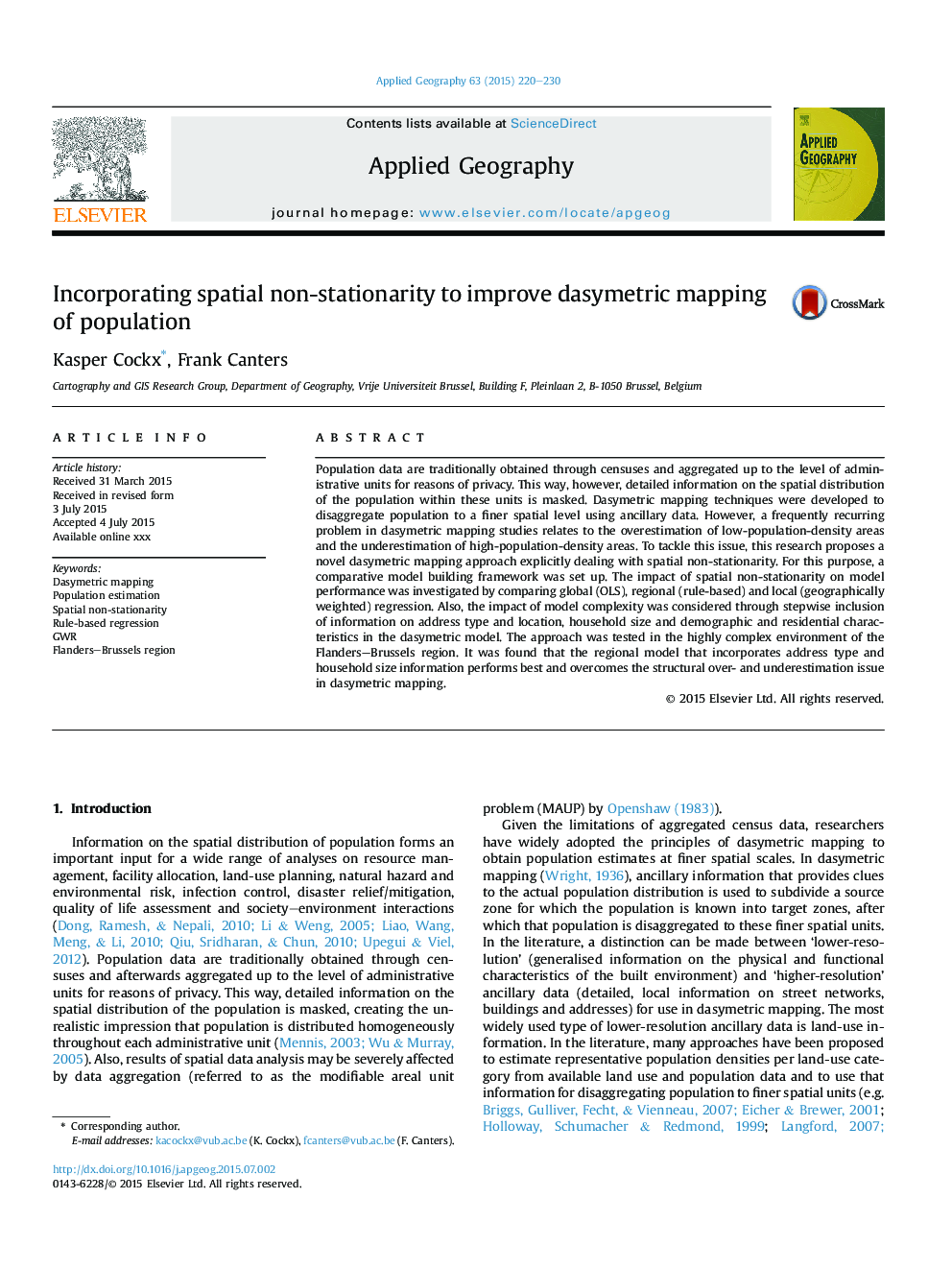| کد مقاله | کد نشریه | سال انتشار | مقاله انگلیسی | نسخه تمام متن |
|---|---|---|---|---|
| 6538460 | 158700 | 2015 | 11 صفحه PDF | دانلود رایگان |
عنوان انگلیسی مقاله ISI
Incorporating spatial non-stationarity to improve dasymetric mapping of population
ترجمه فارسی عنوان
شامل عدم قطعیت مکانی برای بهبود نقشه برداری داسیمتری جمعیت
دانلود مقاله + سفارش ترجمه
دانلود مقاله ISI انگلیسی
رایگان برای ایرانیان
کلمات کلیدی
موضوعات مرتبط
علوم زیستی و بیوفناوری
علوم کشاورزی و بیولوژیک
جنگلداری
چکیده انگلیسی
Population data are traditionally obtained through censuses and aggregated up to the level of administrative units for reasons of privacy. This way, however, detailed information on the spatial distribution of the population within these units is masked. Dasymetric mapping techniques were developed to disaggregate population to a finer spatial level using ancillary data. However, a frequently recurring problem in dasymetric mapping studies relates to the overestimation of low-population-density areas and the underestimation of high-population-density areas. To tackle this issue, this research proposes a novel dasymetric mapping approach explicitly dealing with spatial non-stationarity. For this purpose, a comparative model building framework was set up. The impact of spatial non-stationarity on model performance was investigated by comparing global (OLS), regional (rule-based) and local (geographically weighted) regression. Also, the impact of model complexity was considered through stepwise inclusion of information on address type and location, household size and demographic and residential characteristics in the dasymetric model. The approach was tested in the highly complex environment of the Flanders-Brussels region. It was found that the regional model that incorporates address type and household size information performs best and overcomes the structural over- and underestimation issue in dasymetric mapping.
ناشر
Database: Elsevier - ScienceDirect (ساینس دایرکت)
Journal: Applied Geography - Volume 63, September 2015, Pages 220-230
Journal: Applied Geography - Volume 63, September 2015, Pages 220-230
نویسندگان
Kasper Cockx, Frank Canters,
